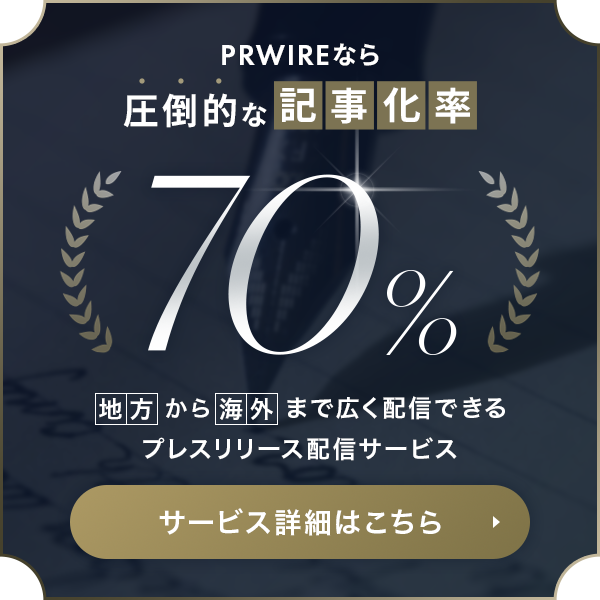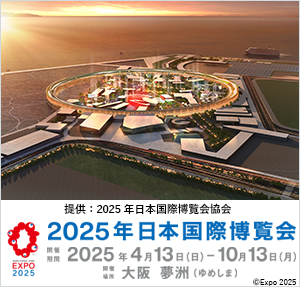LED Lighting Development Wins 2021 Queen Elizabeth Prize for Engineering (QEPrize)
PR87966
LONDON, Feb. 5, 2021 /PRNewswire=KYODO JBN/ --
Isamu Akasaki, Shuji Nakamura, Nick Holonyak Jr, M. George Craford and Russell
Dupuis awarded the world's most prestigious engineering accolade.
The 2021 QEPrize is awarded for the creation and development of LED lighting,
which forms the basis of all solid state lighting technology. Isamu Akasaki,
Shuji Nakamura, Nick Holonyak Jr, M. George Craford and Russell Dupuis are
recognised not only for the global impact of LED and solid state lighting but
also for the tremendous contribution the technology has made, and will continue
to make, to reducing energy consumption and addressing climate change.
First awarded in 2013 in the name of Her Majesty The Queen, the QEPrize exists
to celebrate ground-breaking innovation in engineering. The 2021 winners are
announced today by Lord Browne of Madingley, Chairman of the Queen Elizabeth
Prize for Engineering Foundation. HRH The Princess Royal shared a message of
congratulation for the winners.
Solid state lighting technology has changed how we illuminate our world. It can
be found everywhere from digital displays and computer screens to handheld
laser pointers, automobile headlights and traffic lights. Today's
high-performance LEDs are used in efficient solid state lighting products
across the world and are contributing to the sustainable development of world
economies by reducing energy consumption.
Visible LEDs are now a global industry predicted to be worth over $108 billion
by 2025 through low cost, high efficiency lighting. LED lighting is 75% more
energy efficient than traditional incandescent and compact fluorescent bulbs,
and is playing a crucial role in reducing carbon dioxide emissions. LED bulbs
last 25 times longer than incandescent bulbs and their large-scale use reduces
the energy demand required to cool buildings. For this, they are often referred
to as the 'green revolution' within lighting.
"Engineering is imperative to solving human problems. All over the world,
everyone knows the QEPrize. Most importantly, this is a team prize. I was able
to do what I did in the 1980s, because of what had come before. When I was
modifying reactors every morning and every afternoon continuously for a year
and a half, I never thought it would be so successful." - Professor Shuji
Nakamura
"This is a really special moment for me. The QEPrize is so prestigious and it
is spectacular to receive recognition from The Royal Family. It is a career
highlight that is impossible to beat. Engineering is incredible, and I am proud
to part of something that has made such a big impact on the world." - Dr George
Craford
"It is really something to share in this award win among my friends and
colleagues – all five of us each played an important role, and this recognition
means an awful lot. In those early days, when it was long days and nights
hand-building reactors, Nick Holonyak mentored us. He really drew us in and
inspired us to be part of the adventure that is engineering." - Professor
Russell Dupuis
"This year's Prize winners have not only helped humanity to achieve a greater
degree of mastery over the environment, they have enabled us to do so in a
sustainable way. They have created a product which we now take for granted, but
which will play a major role in ensuring that humanity can live in harmony with
nature for many more centuries to come." - Lord Browne of Madingley, Chairman,
Queen Elizabeth Prize for Engineering Foundation
"The impact of this innovation is not to be understated. It makes lighting a
lot cheaper and more accessible for emerging economies. For example, LEDs are
being used on fishing boats where previously the only option would have been
paraffin lamps. They are much cheaper and safer. It is not only an extreme
engineering achievement, but a societal impact that has a significant impact on
the environment." - Professor Sir Christopher Snowden, Chair of the QEPrize
Judging Panel
The winners will be formally honoured at a ceremony later this year; they will
receive the £1 million prize and an iconic trophy, designed by the 2021 Create
the Trophy winner Hannah Goldsmith, a 20-year-old design student from the
United Kingdom.
Lord Browne also announced a change in the QEPrize cycle to reflect the fact
that just as engineering is continually evolving so too is the QEPrize, which
will now be awarded on an annual basis. The increase in the frequency of the
prize cycle will offer greater opportunities to recognise engineering
excellence.
Regarding this change Lord Browne said, "At the Queen Elizabeth Prize for
Engineering, we recognise that a new age of innovation demands a new approach.
As engineering and its place in society keep evolving, so too must the Prize.
We want to expand our horizons, and do more to recognise the diversity of
contemporary engineering.
"I cannot think of a better way to honour what has been an extraordinary year
for engineering, and to celebrate the centrality of engineers to the story of
human progress."
Find out more: qeprize.org
Additional Quotes:
From QEPrize's Judging Panel:
Dr Jean-Lou Chameau [ https://qeprize.org/judges/dr-jean-lou-chameau ]: "This
innovation has had an impact worldwide, and has evolved over the 50 years it
has been in existence. The science has been transformed into so many
applications – especially in the last 10 years, and there is more to come.
Specifically, its energy saving capabilities are incredible – perhaps without
realising it, everyone using this technology is opting for a greener option."
Professor Carlos Henrique de Brito Cruz [
https://qeprize.org/judges/professor-brito-cruz ]: "The QEPrize itself is
extremely important. Not only does it highlight fantastic creations, but it
also captures the interest of young people and creates role models for young
engineers across the globe to aspire to. Engineering is a challenging and
stimulating career. If you're an engineer, you can do anything. Engineering
allows you to create solutions and solve complex problems that no one has
solved before."
Professor Dame Lynn Gladden DBE [
https://qeprize.org/judges/professor-lynn-gladden ]: "Our 2021 winners are all
part of the green revolution. We're looking at approximately 80% less energy
for LEDs than traditional light bulbs. In the next 10 years, potentially most
of the lighting will be LED. Saving approximately 10% of electricity globally.
The contribution of our winners' collaboration cannot be overstated. Giving
people more robust, reliable, affordable and more environmentally friendly
light sources is the way forward. The wider impact on people's lives is
enormous – it means they have more time in the day to study, work and live."
Professor Dr Dr h.c. Reinhard Huett [
https://qeprize.org/judges/professor-reinhard-huettl ]l: "The environmental
aspect is this innovation's greatest contribution to saving our climate. It's
given us a completely new approach to lighting. You find them anywhere and
everywhere."
Professor Jim Al-Khalili OBE [ https://qeprize.org/judges/jim-al-khalili ]:
""Each one of the five winners has contributed, in unique ways – from the
initial creation, development of the technology, to its applications. What's
more, it is incredibly efficient compared to incandescent lighting, which
requires the heating of a filament. This means it has exciting implications for
reducing energy consumption on a mass scale and brings light to parts of the
world where electricity supplies are limited."
Professor Jinghai Li [ https://qeprize.org/judges/jinghai-li ]: "Science gives
knowledge for the basis of human beings. Engineering gives us the solutions.
Without this engineering achievement, there would be so much we would not be
able to do. LED lighting is everywhere – from cars to computer screens, from
streetlights to its use in hospitals to kill viruses."
Dr Raghunath Anant Mashelkar [
https://qeprize.org/judges/raghunath-anant-mashelkar ]: "This technology is a
gamechanger. It helps us deal with one of the biggest challenges facing the
world today – decarbonising to mitigate against climate change and help create
a greener future. Not only is it an incredible innovation, but because it is
affordable and easy to produce, its impacts are amplified. In India, for
example, LED, means people are not exposed to the toxicity of other lighting
solutions such as kerosene lamps, as is often the case."
Ilya Marotta [ https://qeprize.org/judges/ilya-marotta ]: "QEPrize is all about
showing to the world how, through engineering innovation and creativity, we can
solve the world's problems. Our 2021 winners are from different countries, but
they came together to create something incredible. It goes to show the
incredible things that can happen when engineers work together. You might think
the story of creating lightbulbs belongs in the history book, but it's still
happening today, and we can learn from the people behind it."
Dr Dan Mote Jr [ https://qeprize.org/judges/dr-dan-mote ]: "This impressive,
decorated group of scientists have created an innovation that is undeniably
paramount to our planet, especially as we face the continual challenge of
reducing our consumption of fossil fuels worldwide. LEDs require no fuel yet
produce an extremely high-quality light source, without contaminating the
greater environment, across a broad spectrum of lighting needs. Hundreds of
millions of LEDs are created every year and you wouldn't be able to stick a pin
on our planet without finding them being used – they're ubiquitous."
Professor Dr Dr h.c. Viola Vogel [
https://qeprize.org/judges/professor-viola-vogel ]: "The impact of this
innovation on the world is enormous and has a huge effect on our planet. The
QEPrize demonstrates how important it is that that young people follow their
talents and identify the key challenges that lie ahead. There are so many
challenges that we need to address today, and younger generations should
continually ask themselves how they can use their talents wisely to make this a
better world."
Dr Henry Yang [ https://qeprize.org/judges/henry-yang ]: "Engineers are problem
solvers. Society needs engineers to help us to solve the problems; to create
the technologies we haven't had before and to continuously improve our quality
and health of life, especially when the population continues to grow."
From Create the Trophy's Judging Panel:
Sir Ian Blatchford: "Judging the Create the Trophy competition was an
exceptionally difficult task this year – though it is always so stimulating and
enjoyable. The winning design combines elegance and interest – it draws
inspiration from the circuit boards on which much science and engineering is
done. We were particularly struck by Hannah's design as it had the audacity of
design, it was something our winners can be proud to have on their mantlepiece."
Roma Agrawal: "This year was particularly challenging for us as judges, there
were so many brilliant designs! In the end, we loved Hannah's approach to
translating the circuitry of engineering into a beautiful organic form. I
particularly like how she used the third dimension to add depth to her design.
I was also hugely impressed with Atharva's piece, it reminds me of ancient
Japanese joinery techniques and I enjoy how turning it around gives you a new
view of the design, with a focus on the empty space inside the shape."
Zoe Laughlin: "The winning Create the Trophy entry was beautifully designed. It
is abstract but you could read meaning into it. We saw a great range of ages in
the shortlist, and entrants from all far flung corners of the world, from India
to Italy. There were very powerful themes – very much looking at universality
and what unites us, and the endeavour that engineering represents. If you're
interested in making stuff and problem solving, then you're interested in
engineering".
Rebeca Ramos: "The winning Create the Trophy entry was a fully-formed,
considered design. It was clear to us how this would look, and how it would be
made. Design and engineering are tied together. One of the missions I have in
life is to make it clear these are not mutually exclusive. It's really great
when a designer understands the physics of material and from that can let their
creativity flow."
Notes to Editors:
About the 2021 QEPrize
QEPrize celebrates engineering's visionaries, encouraging engineers to help
extend the boundaries of what is possible across all disciplines and
applications. It also inspires young minds to consider engineering as a career
choice and to help to solve the challenges of the future.
The QEPrize is administered by the Queen Elizabeth Prize for Engineering
Foundation and funded by generous support from the following corporate donors:
BAE Systems plc, BP plc, GlaxoSmithKline, Hitachi, Ltd., Jaguar Land Rover,
National Grid plc, Nissan Motor Corporation, Shell UK Ltd, Siemens UK, Sony,
Tata Steel Europe, Tata Consultancy Services, and Toshiba.
The 2021 winners are awarded a total cash prize of GBP 1 million.
The 2021 prize was open to:
- up to five living individuals;
- of any nationality;
- who are personally responsible for a ground-breaking innovation in
engineering which has been of global benefit to humanity. Self-nomination was
not permitted.
- The trustees reserved the right to reject any nomination where, in their
reasonable opinion, there was or was likely to be a conflict of interest
between the nominees, nominators, or any referees and any other nomination or
the prize more generally.
The judges use these criteria to select the winner, or winners, of the QEPrize:
- What is it that they have done that is a ground-breaking innovation in
engineering?
- In what way has this innovation been of global benefit to humanity?
- Are there any other individuals who might claim to have had a pivotal role in
this development?
About the QEPrize cycle transition from 2022
The QEPrize is increasing the frequency of its prize cycle from 2022 in order
to offer greater opportunities to recognise engineering excellence.
Those awarded the QEPrize before 2021 received a total cash prize £1million –
winners from 2022 onwards will receive £500,000. The entry and judging criteria
remain the same.
About the Create the Trophy Competition
The QEPrize trophy is found through the Create the Trophy competition. The
winning design is selected by a panel of expert judges from across the fields
of engineering and design. The competition gives young people worldwide (aged
14-24) the opportunity to get involved, testing their design skills using the
latest in 3D-design technology.
Source: QEPrize
本プレスリリースは発表元が入力した原稿をそのまま掲載しております。また、プレスリリースへのお問い合わせは発表元に直接お願いいたします。
このプレスリリースには、報道機関向けの情報があります。
プレス会員登録を行うと、広報担当者の連絡先や、イベント・記者会見の情報など、報道機関だけに公開する情報が閲覧できるようになります。










